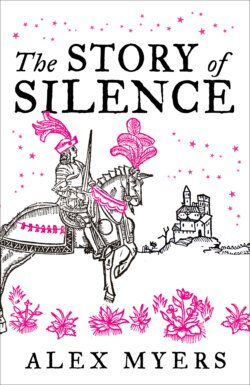Читать книгу The Story of Silence - Alex Myers - Страница 6
Preface
ОглавлениеIn 1911, in Wollaton Hall in Nottingham, in a crate marked Old papers – no value, rested a manuscript. The manuscript, likely copied for Lady Beatrice de Gavre on the occasion of her marriage in 1286, contains eighteen stories. One of these was Silence – a previously undiscovered poem over seven hundred years old.
Written in Old French, a mixture of Francien and Picard, the poem is an unusual one. It tells the story of a girl raised as a boy – a motif somewhat familiar from the tales of warrior maidens and women musicians that circulated in the same time period. But it also contains completely novel elements, such as spirited debates between personified figures of Nature and Nurture, who argue over Silence’s true self.
In places, this 13th-century poem treats gender in a way that seems post-modern. The purported author, one Heldris of Cornwall (otherwise unknown), puns with the gendered endings of words and deliberately undermines the ‘reliability’ of language to reveal gender. To give one example, from Sarah Roche-Mahdi’s excellent translation:
‘He [Silence] was so used to men’s usage
and had so rejected women’s ways
that little was lacking for him to be a man
Whatever one could see was certainly male!’
This is a writer who understands that a major aspect of gender is what’s visible in public life (what we would now call gender expression). The ‘little that is lacking’ (that is, genitalia) doesn’t matter at all when it comes to lived experience and others’ perceptions.
When I read these lines, and others like them, I knew I had found a text that I had to explore more fully. What follows, is an expansion, a reimagining, a riff, on Silence. The major plot points are the same, many of the characters are as well. I wanted to be true to the struggle between Nature and Nurture, but represent it more organically. I wanted to keep the troubled (and troubling) depiction of (most) women being evil and inferior, while (noble) men are greedy and glorious. I added a bit more of Merlin because – well, because it’s Merlin. I added more to the story of Silence’s time with the minstrels and his time outside of England, which the original hurries through. And I changed the telling of Silence’s re-entry to England in order to further explore how this bittersweet homecoming feels to Silence and also to simplify some of the interactions between him and Queen Eufeme, which are quite drawn out and convoluted in the original. But on the whole, the changes I made were in the service of writing a tale full of fantasy and narrative tension; I tried to be faithful to my reading of the original in spirit even when I was not faithful in precise detail.
For those who are curious and want further reading, I highly recommend Sarah Roche-Mahdi’s English translation of the original; this volume will point you to other wonderful scholarship in the field as well.
